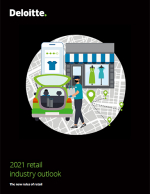COVID-19: Managing Cash Flow during a Period of Crisis
As a typical “black swan” event, COVID-19 took the world by complete surprise, this paper suggests ways organizations can mitigate damages to their business during this volatile event.
Coronavirus Cash Flow Implications Across Extended Supply Chain
This newly identified coronavirus was first seen in Wuhan, the capital of Hubei province in central China, on December 31, 2019.
As we enter June 2020, the virus has infected over 6,300,873 people and led to more than 374,537 deaths worldwide.
More importantly, more than 75 countries are now reporting positive cases of COVID-19 as the virus spreads globally, impacting communities, ecosystems, and supply chains far beyond China.
The focus of most businesses is now on protecting employees, understanding the risks to their business, and managing the supply chain disruptions caused by the efforts to contain the spread of COVID-19.
The full impact of this epidemic on businesses and supply chains is still unknown, with the most optimistic forecasts predicting that normalcy in China may return by April,1 with a full global recovery lagging depending on how other geographies are ultimately affected by the virus.
However, one thing is certain: this event will have global economic and financial ramifications that will be felt throughout global supply chains, from raw materials to finished products.
Responding to the Immediate Challenge
Borrowing from the lessons learned from the SARS outbreak in 2003, the 2008 recession and credit crunch, and the last black swan event to significantly impact global supply chains - the Japanese earthquake of 2011 - we offer the following practices and strategies for consideration:
- Ensure you have a robust framework for managing supply chain risk
- Ensure your own financing remains viable
- Focus on the cash-to-cash conversion cycle
- Think like a CFO, across the organization
- Revisit your variable costs
- Revisit capital investment plans
- Focus on inventory management
- Extend payables, intelligently
- Manage and expedite receivables
- Consider alternative supply chain financing options
- Audit payables and receivables transactions
- Understand your business interruption insurance
- Consider alternative or non-traditional revenue streams
- Convert fixed to variable costs, where possible
- Think beyond your four walls
What’s Next: Recovering and Returning to Normal Business Operations
Cash flow management needs to be an integral element of a company’s overall COVID-19 risk assessment and action planning in the near term.
Even for companies that have not yet been adversely affected, we recommend management teams with concerns about COVID-19 actively evaluate their cash flow requirements, develop appropriate actions under various scenarios, and assess potential risks in and to their customer base and supplier network.
What’s Related




Favorites





